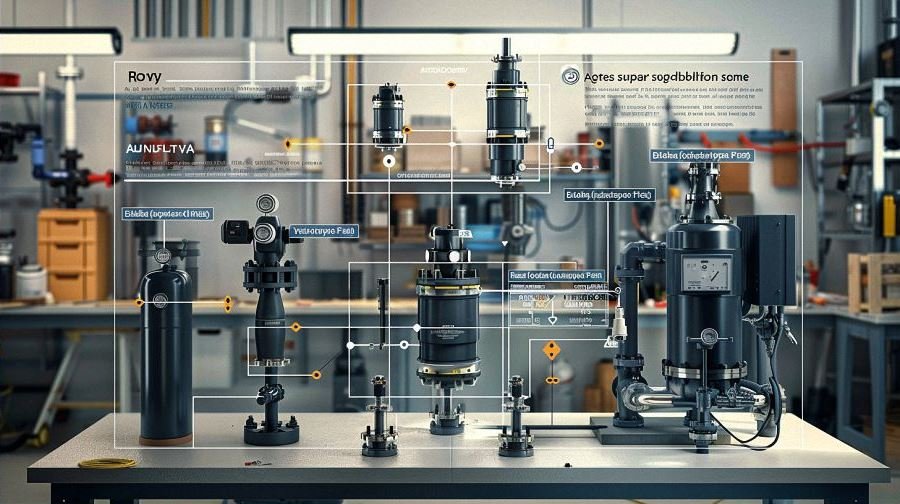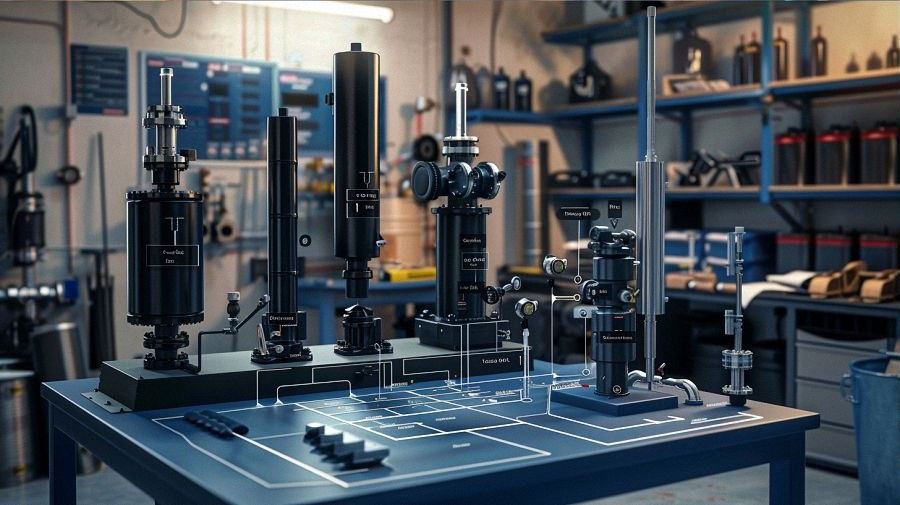Choosing the Best Submersible Pump for You

Understanding Submersible Pumps for Well Applications
Introduction to Submersible Pump Technology
Picture this: You’re standing by your well, wondering how to draw water efficiently. That’s where submersible pumps come into play. These marvels of engineering are designed to operate underwater, making them the go-to choice for well applications worldwide.
Contents
ToggleSubmersible pumps work by pushing water up to the surface from deep within the well. Unlike their surface counterparts, which sit above ground and pull water through a hose, submersible pumps are submerged directly into the water source. This design not only maximizes efficiency but also minimizes the risk of cavitation, a phenomenon where bubbles form in the pump and reduce performance.
Advantages over Surface Pumps for Well Applications
Now, you might be wondering, “Why choose a submersible pump over a surface one?” Well, let’s break it down. Firstly, submersible pumps are inherently more efficient because they don’t have to overcome the force of gravity to draw water upward. This means they can operate at higher pressures and pump water from greater depths without sacrificing performance.
Furthermore, submersible pumps are less susceptible to external factors like weather and debris. Since they’re safely tucked away underwater, they’re protected from harsh elements and don’t require as much maintenance as surface pumps. Plus, their compact design makes them ideal for tight spaces, such as narrow wells or boreholes.
Key Factors in Choosing a Submersible Pump
When it comes to selecting the right submersible pump for your well, several factors come into play:
-
Well Depth, Diameter, and Water Table: Before making a decision, consider the depth and diameter of your well, as well as the level of the water table. These factors will determine the size and power requirements of your pump.
-
Pump Capacity and Flow Rate Requirements: Think about how much water you need to pump and at what rate. Whether you’re irrigating crops or supplying water to your home, choosing a pump with the appropriate capacity and flow rate is crucial for meeting your needs efficiently.
-
Power Efficiency and Durability Considerations: Don’t overlook the importance of power efficiency and durability. Look for pumps with energy-efficient motors and durable construction materials to ensure reliable performance and longevity.
In conclusion, choosing a submersible pump for your well is a decision that requires careful consideration of various factors. By understanding how these pumps work and their advantages over surface alternatives, you’ll be better equipped to make an informed choice that meets your water pumping needs effectively.

Selecting the Right Submersible Pump for Different Well Depths
Choosing a Pump for a 10-Meter Well
So, you’ve got a relatively shallow well with a depth of around 10 meters. What kind of submersible pump should you go for? Well, for starters, you’ll want something that’s tailored to handle shallower depths efficiently.
Recommended Pump Models Suitable for Shallow Wells
When it comes to pumps for shallow wells, compactness is key. You don’t want a bulky, oversized pump taking up precious space in your well. Look for models like the Grundfos 3SQF-2 or the Franklin Electric 10FV1S4-2W230, both designed specifically for shallow applications.
Emphasis on Compact Size and Efficiency for Shorter Well Depths
These pumps are engineered to be small yet mighty, delivering impressive performance despite their diminutive size. With efficient motors and compact designs, they’re perfect for extracting water from shallower depths without breaking a sweat. Plus, their space-saving profiles make installation a breeze, even in cramped well casings.
Selecting a Pump for a 20-Meter Well
Now, let’s move on to slightly deeper territory. If your well reaches depths of around 20 meters, you’ll need a pump that’s up to the task.
Comparison of Pump Options Optimized for Moderate Well Depths
For wells in the 20-meter range, consider pumps like the Grundfos SP3A-13 or the Franklin Electric 20FV1S4-3W230. These pumps strike the perfect balance between power and efficiency, making them ideal for moderate-depth wells.
Discussion on Capacity and Performance for Mid-Range Depths
With increased depth comes the need for higher capacity and performance. These pumps boast robust construction and powerful motors, allowing them to pump water effectively from depths of up to 20 meters. Whether you’re irrigating crops or supplying water to your home, these pumps have you covered.
Picking the Ideal Pump for a 25-Meter Well
Now, let’s tackle the deep end of the spectrum. If your well plunges to depths of 25 meters or more, you’ll need a heavy-duty pump that can handle the pressure.
Evaluation of High-Capacity Submersible Pumps for Deeper Wells
When it comes to deep wells, reliability is paramount. Look for pumps like the Grundfos SP5A-17 or the Franklin Electric 25FV1S4-3W230, specifically engineered for high-capacity pumping in deep wells.
Emphasis on Reliability and Longevity for Deeper Installations
These pumps are built to last, with rugged construction and durable components that can withstand the rigors of deep-well pumping. Plus, with advanced features like thermal overload protection and corrosion-resistant materials, they offer peace of mind and reliable performance for years to come.
In conclusion, selecting the right submersible pump for your well depends on factors like depth, capacity, and performance requirements. By choosing a pump tailored to your specific well depth, you can ensure efficient water extraction and reliable operation for years to come.

Comparing Submersible and Surface Pumps for Well Applications
When it comes to pumping water from wells, you have two primary options: submersible pumps and surface pumps. Each type has its own set of advantages and disadvantages, so let’s dive into a comparative analysis to help you make the best choice for your well.
Advantages and Disadvantages of Submersible Pumps
Submersible pumps operate underwater, making them ideal for well applications where the pump needs to be submerged. Let’s explore the pros and cons:
Discussion on Submerged Operation and Protection from Environmental Factors
Submersible pumps are designed to operate underwater, which means they’re protected from environmental factors like weather and debris. This submerged operation also reduces the risk of cavitation, a phenomenon that can occur in surface pumps when air bubbles form and disrupt water flow.
Analysis of Maintenance Requirements and Longevity Compared to Surface Pumps
One of the main advantages of submersible pumps is their lower maintenance requirements compared to surface pumps. Since they’re submerged, they’re less prone to wear and tear from external elements. Plus, their sealed design helps prevent water damage and extends their lifespan.
However, it’s worth noting that submersible pumps can be more challenging to repair if they do require maintenance, as they need to be pulled out of the well for servicing.
Pros and Cons of Surface Pumps for Well Usage
Surface pumps, on the other hand, are installed above ground and draw water from the well using suction or a suction pipe. Let’s explore their advantages and disadvantages:
Examination of Ease of Access for Maintenance and Repair
One of the main advantages of surface pumps is their ease of access for maintenance and repair. Since they’re installed above ground, technicians can easily access and service them without having to pull them out of the well.
Consideration of Surface Pump Limitations in Well Depth and Efficiency
However, surface pumps have limitations when it comes to well depth and efficiency. They’re typically only suitable for shallow wells, as they rely on suction to draw water upward. Additionally, they may not be as efficient as submersible pumps, especially in deeper wells where the water needs to be lifted over a greater distance.
Making the Best Choice for Your Well
So, which type of pump is the best choice for your well? It ultimately depends on factors like well depth, water volume requirements, and budget. Here are some recommendations to help you make an informed decision:
Comparative Analysis Based on Well Depth, Water Volume Requirements, and Budget
-
For shallow wells with depths of up to 20 meters, surface pumps may be a cost-effective option, especially for smaller water volume requirements.
-
For deeper wells exceeding 20 meters, submersible pumps are the preferred choice due to their efficiency and reliability, albeit at a potentially higher upfront cost.
-
Consider your budget constraints and long-term maintenance requirements when making your decision.
In conclusion, both submersible and surface pumps have their own set of advantages and disadvantages for well applications. By carefully evaluating your specific well characteristics and preferences, you can choose the pump that best meets your water pumping needs.
